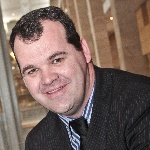 George Ambler, Gartner
George Ambler, Gartner
Enterprise architecture should help make better decisions
One of the major barriers to successful enterprise architecture (EA) implementations, according to George Ambler, executive partner at Gartner Executive Programs, is a lack of collaboration between the EA team and the company stakeholders.
The stakeholders are the ones who are going to be using the information generated from EA, yet the documents produced are for a technical audience. The information is too technical, and full of too many details, that the business executives are not likely to use it. “The result is all that work is not resulting in effective decision-making, or value,” says Ambler.
One of the biggest mistakes companies make is to neglect communication between the EA team and senior executives. “Architecture teams should be spending 30% of their time collaborating with senior executives and helping them to make strategic choices using EA. Most teams don’t commit anywhere near that,” explains Ambler.
Another barrier is a lack of understanding of the goals and objectives of EA programmes, and how that aligns to business. A programme is established, but the results it produces are not optimised for that particular business.
The final barrier Ambler notes is an over-reliance on EA frameworks. To blindly follow EA frameworks, such as TOGAF, leads to producing unnecessary documentation just because it’s what the framework says, which could bury the valuable information, making it difficult to find. To get business value, a company needs to customise its EA programme. “You want to use your documentation to inspire, not perspire. Only produce documentation that helps in decision-making,” Ambler says.
“Another mistake EA teams make is they try to boil the ocean instead of focusing on the two or three key imperatives the company wants to use EA for, and focus on that and do an iterative approach,” he says. A number of iterations over a period of time flesh out the results of the EA.
EA programmes should be improving and maturing over time, he says. Most start out initially focused on solving some issues like standardising the enterprise’s approach to technology. “This is usually quite successful. Then, the enterprise matures, but the EA team does not mature and help solve new challenges. The enterprise leaves them behind,” he says.
He recommends the team spends time assessing its level of maturity, and works on continuous improvement and keeping relevant. If not, it runs the risk of getting left behind. “Part of their job is reinvention.”
Ambler also says many companies neglect to ensure the decisions they make as a result of the EA adhered to. “Having a governance model in place is also important.”
Ambler and Brain Burke, research VP at Gartner, will present at the upcoming Gartner Enterprise Architecture Foundation Seminar 2012, being held on 19 and 20 November, at the Hilton Hotel, in Sandton; and on 22 and 23 November, at the 15 on Orange Hotel, in Cape Town.
|
Post a comment
|
Login.
All rights reserved © Copyright by ITWeb, 2011


